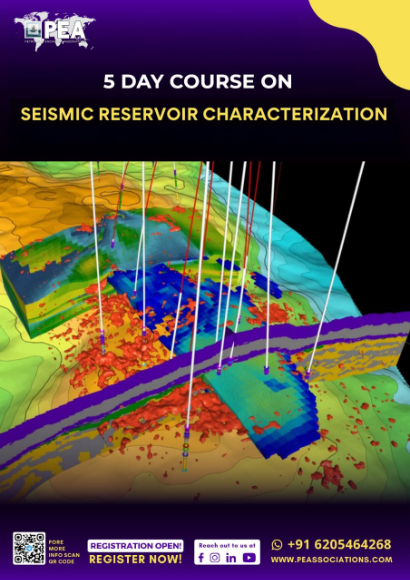Boost your team's skills and your budget! Enjoy group discounts for collaborative learning. Send an inquiry to info@peassociations.com.
Pitfall Of Seismic Imaging (Advanced Seismic Processing & Interpretation)
Description
The course provides the participants with professional practical information in addition to understanding the theory. The materials will cover the most updated and recent techniques used in the industry. The course will start with the seismic acquisition, setting, and parameters and how they can affect the image later and what are the key elements that might cause errors in the image, ending the 1st day with an introduction to migration theory.
Day 2 will go deeper into the migration theory and its application in the form of PSTM/PSDM where we are going to understand how to run and QC the migrations also the difference between PSTM and PSDM. From this point we will start to run the sequence in the reverse direction, focusing on the key steps in the sequence that has a great impact on the image.
Finally, the course ends up with covering the interpretation part through understanding the AVO & AVA in theory and practice.
Objectives
Have enough seismic acquisition and processing knowledge required to understand pitfalls.
Understand the impact of the subsurface Geology range of complexities on seismic processing and seismic imaging.
The interpreter can judge the quality of seismic by doing proper QC.
Precisely detect the errors in seismic images resulting from different seismic processing steps.
AVO & AVA in Theory and Practice.
Agenda
Day 1: Seismic Acquisition - Pitfalls of seismic imaging - Introduction to Migration Theory
Day 2: Migration theory - PSTM/PSDM Migration
Day 3: Avoiding Pitfalls in terms of processing (Velocity model building and update, Statics, Noise, and multiples removal, Regularization)
Day 4: AVO & AVA
Day 5: AVO & AVA practical exercises - Summary - Q&A
Benefits of Joining
By the end of the course, the intern will be able to catch errors in the image coming from the processing
You will be able to do AVO analysis on Software.
Whom to join the course
processor and interpreter geophysicists who are actively involved in the advanced seismic data processing
Pre-requisite
Experience in seismic processing
Personal benefits
The participant will gain more practical knowledge and will be exposed to new aspects
Organizational benefits
Every participant is already a part of a team in his company, the course is not only delivering information to one person but is delivering it to the participant team as well















